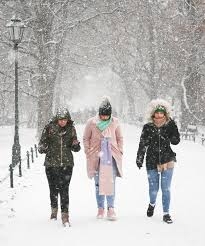sandy
Doctor : Medical Student
Wants to meet Doctors : I Hope To Meet Other Students Here
Articles
51
Followers
13
profile/4586Capturenn.PNG
Sandy
Basic First Aid For Blisters
~0.5 mins read
.jpg)
Whether or not a blister11 needs any treatment is debatable. If the blister is small, unbroken and not very painful, it is probably best to leave it alone. Cover it to prevent continued rubbing and pressure on it that can cause it to swell more and possibly burst on its own.
If the blister is large or painful—especially if the activity isn’t finished (such as you are in the middle of a hike)—follow steps to drain and dress a blister.12 Use a sterilized needle and make small punctures at the edge of the blister and express the fluid. Then apply antibiotic ointment and cover it to protect it from further rubbing and pressure.
If the blister is large or painful—especially if the activity isn’t finished (such as you are in the middle of a hike)—follow steps to drain and dress a blister.12 Use a sterilized needle and make small punctures at the edge of the blister and express the fluid. Then apply antibiotic ointment and cover it to protect it from further rubbing and pressure.
profile/4586Capturenn.PNG
Sandy

Basic First Aid For Frostbite
~0.5 mins read
Frostbite occurs when the body's tissues freeze deeply in the cold.18 Ice crystals that form in the tissues cause damage to the cells. This is the opposite of a burn, but it does almost identical damage to the skin.
Treating frostbite19 is a delicate procedure of gradual warming. If at all possible, this should be done by professionals at a medical facility. First, get out of the cold. Small areas of minor frostbite20 may be rewarmed by skin-to-skin contact, but avoid using any heat sources or hot packs.
If you can't make it to a medical facility, use immersion of the affected area in warm water (98 to 105 F) for 20 to 30 minutes to rewarm it. Do not rub the affected area or use heat sources.
Treating frostbite19 is a delicate procedure of gradual warming. If at all possible, this should be done by professionals at a medical facility. First, get out of the cold. Small areas of minor frostbite20 may be rewarmed by skin-to-skin contact, but avoid using any heat sources or hot packs.
If you can't make it to a medical facility, use immersion of the affected area in warm water (98 to 105 F) for 20 to 30 minutes to rewarm it. Do not rub the affected area or use heat sources.
Advertisement

Link socials
Matches
Loading...